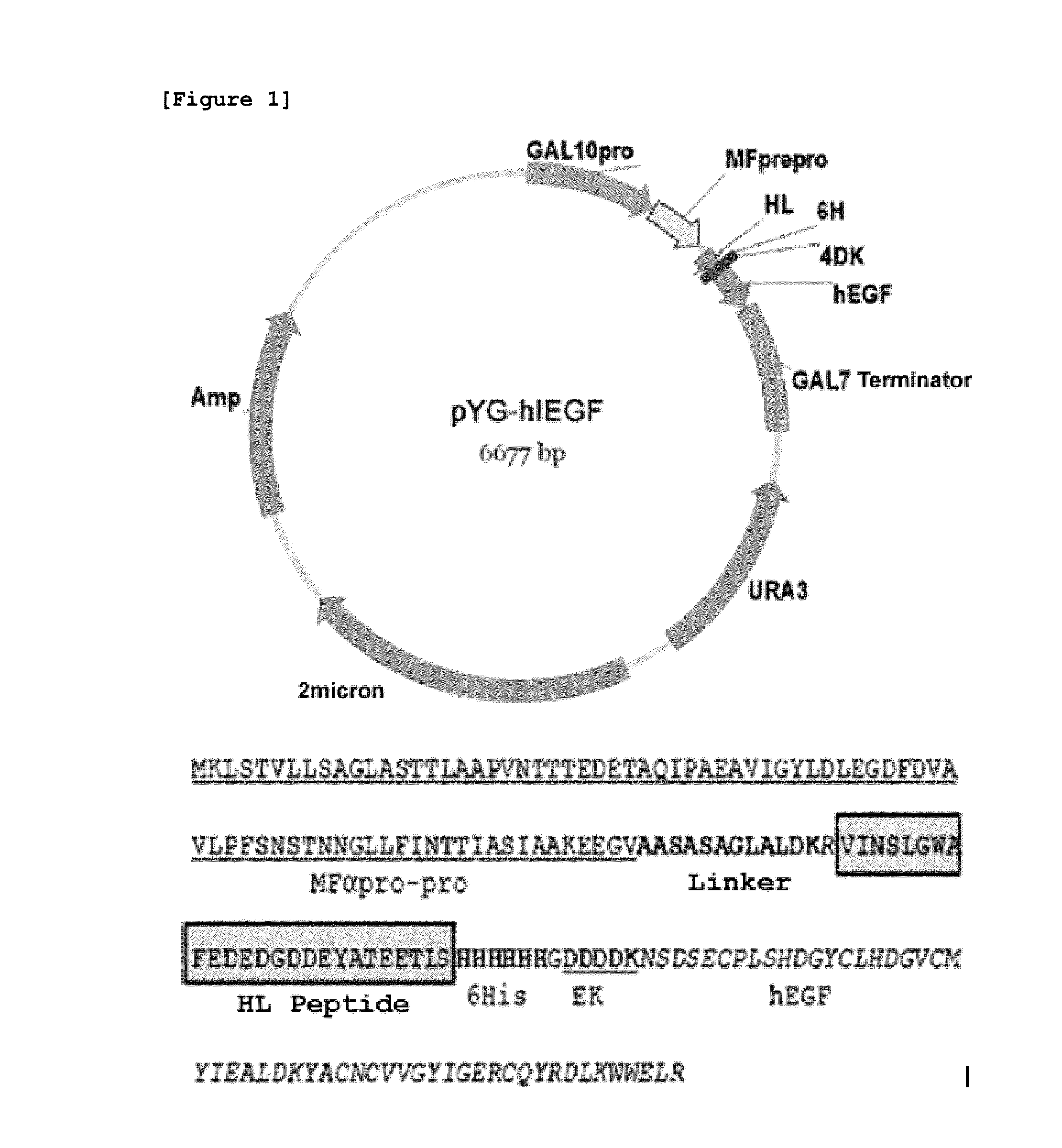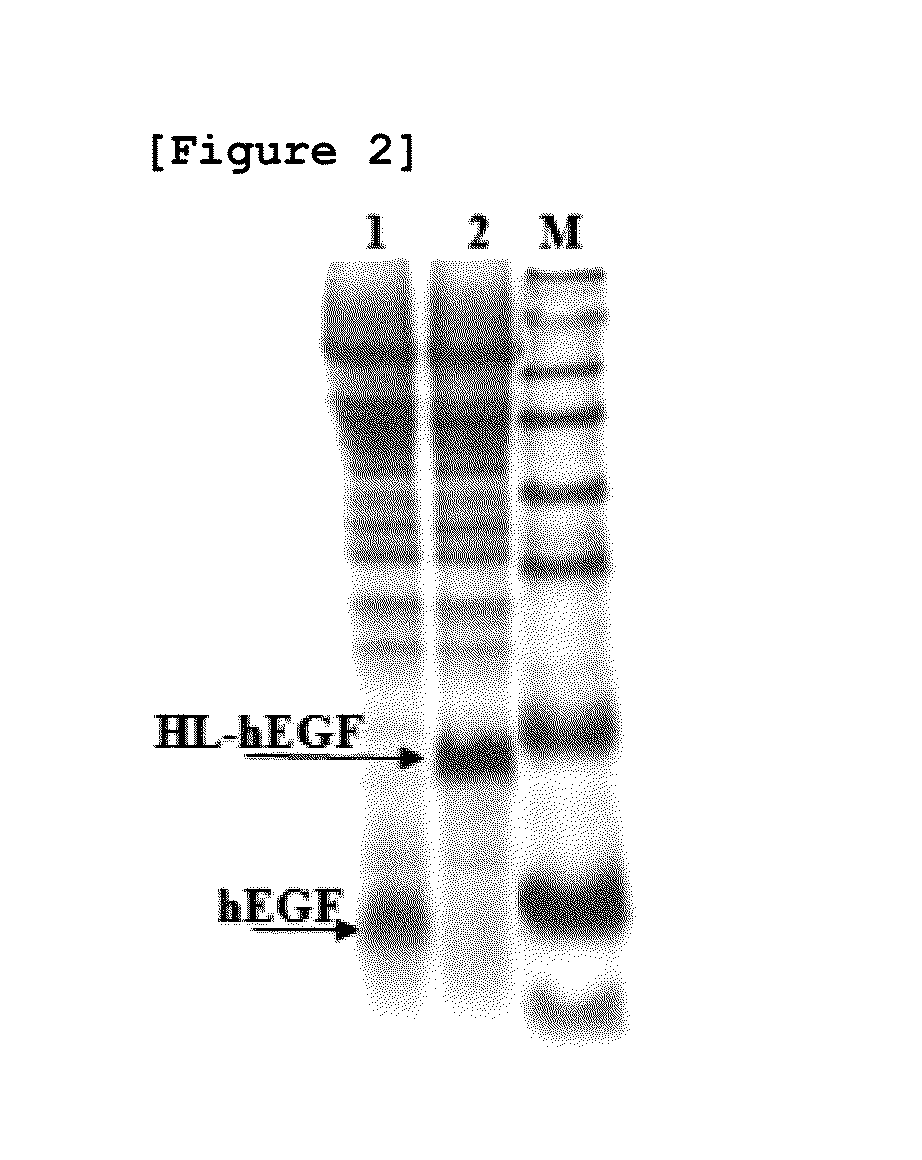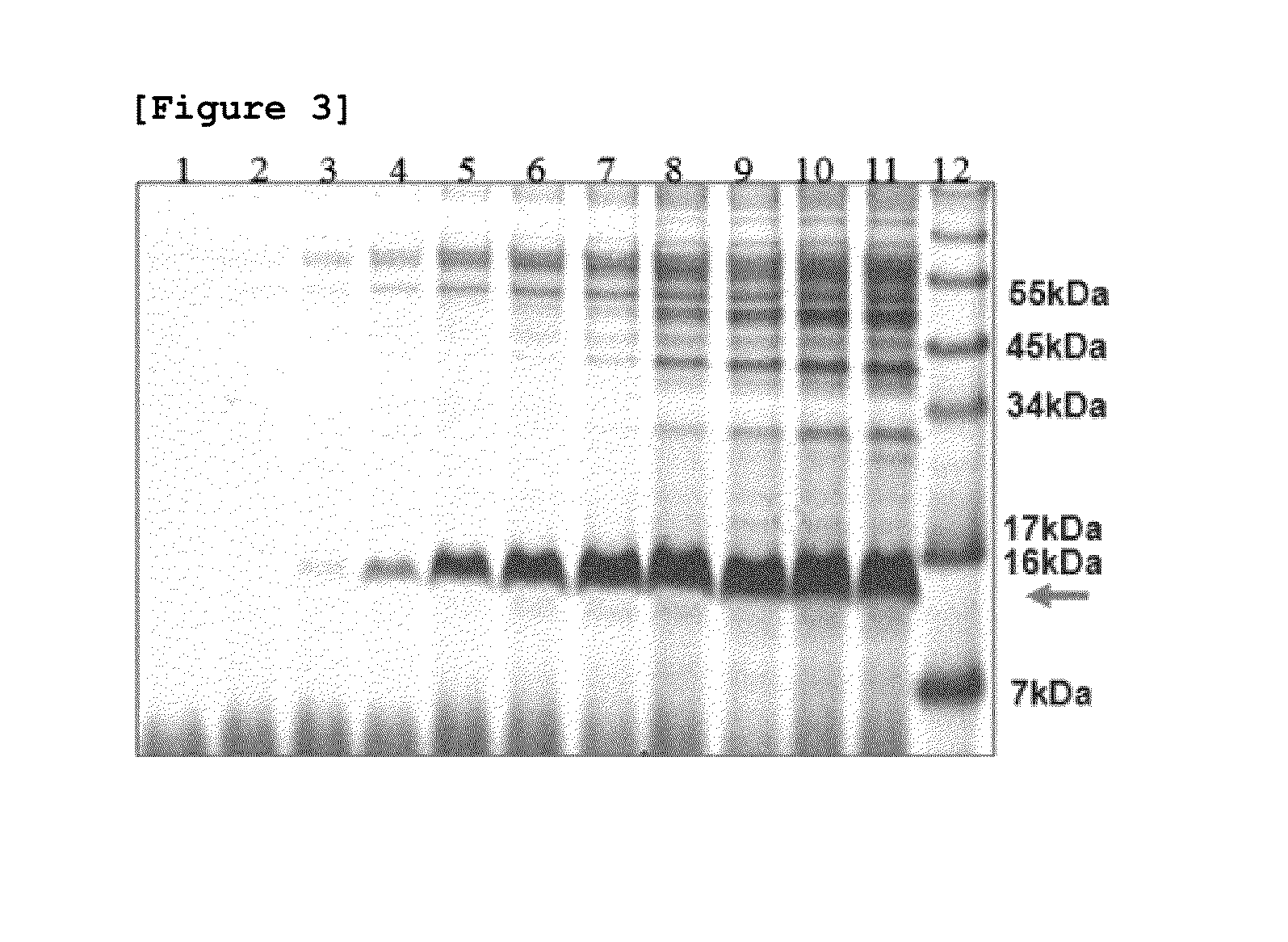Method for producing human epidermal growth factor in large volume from yeast
a technology of epidermal growth factor and yeast, which is applied in the field of producing human epidermal growth factor in large volume, can solve the problems of not receiving attention as egf, raising the price of functional cosmetics, and disadvantages of high cost, and achieves the effects of improving efficiency, low productivity, and easy production excessively
- Summary
- Abstract
- Description
- Claims
- Application Information
AI Technical Summary
Benefits of technology
Problems solved by technology
Method used
Image
Examples
example 1
Preparation of EGF Expression Strain Using Hydrophilic Domain (HL) of VOA1 (YGR106c) Gene as Secretory Fusion Partner
[0069]The present inventors identified the C-terminus removed yeast VOA1 (YGR106c) gene to be secreted excessively out of the cells and utilized the same as the secretory fusion partner. In particular, HL peptide (Hydrophilic domain) consisting of amino acid sequence of SEQ ID NO:14, which has the highest charges among the domains of VOA1 protein due to the composition of hydrophilic amino acid, was used as the optimal site of the secretory fusion partner of hEGF (SEQ ID NO:14 VINSLGWAFEDEDGDDEYATEETLS).
[0070]pYG-hlEGF, which is the hEGF expression vector, was prepared by fusing hEGF with HL peptide consisting of the amino acid sequence of SEQ ID NO: 14 (FIG. 1). First, HL peptide gene linked to MFα pre-pro leader peptide gene by using GAL100 primer (SEQ ID NO: 1) and DDK-R (SEQ ID NO: 2) was amplified, and hEGF gene was amplified using the sense primer H410 (SEQ ID N...
example 2
Identification of Increase in hEGF Productivity by HL Peptide
[0072]In order to determine the effect of HL peptide consisting of amino acid sequence of SEQ ID NO: 14 on the hEGF productivity, hEGF expression vector linked directly to MFa pre-pro peptide without the HL peptide was prepared by the same method as Example 1. The amount of secreted hEGF and HL-hEGF fusion proteins were compared after culturing the transfected yeast strains with YgaMF-EFG vector and pYG-hlEGF vector in vitro. After culturing each strain in a test tube containing YPDG medium (yeast extract fluid 1%, peptone 2%, glucose 1%, and galactose 1%) for 40 hours at 30° C., acetone of 0.4 ml was added to the culture fluid of 0.6 ml and precipitated. The resultant was dissolved in a buffer, and then the size and the amount of secreted proteins were compared by SDS-PAGE analysis.
[0073]As a result, the expression level of hEGF, when expressed in the form of HL-hEGF fusion protein (lane 2), was identified to increase by ...
example 3
Fermentation and Purification for Producing hEGF
[0074]In order to determine the hEGF productivity of the strain transfected with pYG-hlEGF identified in Example 2, fed batch fermentation and culture were performed using the same strain. The strains cultured in the minimal medium of 200 ml were inoculated to the fermentor of 5 L scale containing 1.8 L fermentation medium (2% glucose, 4% yeast extract, 1% peptone). When the glucose is completely exhausted, fermentation can proceed for 50 hours while adding feed medium (30% glucose, 30% galactose, 15% yeast extract) gradually by 2 g / L to 20 g / L per hour, depending on the growth of the cell.
[0075]As shown in FIG. 3, the result of direct SDS-PAGE analysis of 10 μl fermentation medium without concentration identified that the fusion protein is secreted approximately more than 500 mg / L at the end of fermentation.
[0076]In order to purify the hEGF fusion protein secreted into the fermentation medium, the fermentation medium was concentrated ...
PUM
| Property | Measurement | Unit |
|---|---|---|
| concentration | aaaaa | aaaaa |
| pH | aaaaa | aaaaa |
| molecular weight | aaaaa | aaaaa |
Abstract
Description
Claims
Application Information
 Login to View More
Login to View More - R&D
- Intellectual Property
- Life Sciences
- Materials
- Tech Scout
- Unparalleled Data Quality
- Higher Quality Content
- 60% Fewer Hallucinations
Browse by: Latest US Patents, China's latest patents, Technical Efficacy Thesaurus, Application Domain, Technology Topic, Popular Technical Reports.
© 2025 PatSnap. All rights reserved.Legal|Privacy policy|Modern Slavery Act Transparency Statement|Sitemap|About US| Contact US: help@patsnap.com



